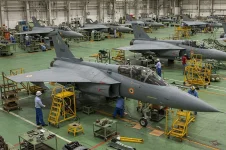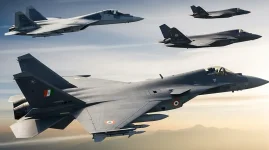- Views: 2K
- Replies: 23

In a move that could redefine India's defence acquisition strategy, the new Chief of the Indian Air Force (IAF), Air Chief Marshal Amar Preet Singh, has indicated a preference for the "Jaguar model" in the upcoming Multi-Role Fighter Aircraft (MRFA) tender. This signifies a major shift towards self-reliance and could have significant implications for global aircraft manufacturers.
The MRFA tender, seeking to procure 114 advanced fighter jets, is crucial for modernizing the IAF's combat fleet. The "Jaguar model," as highlighted by the IAF Chief, emphasizes autonomy in upgrading and modifying the chosen aircraft. This draws inspiration from the IAF's successful experience with its SEPECAT Jaguar fleet, which has undergone multiple indigenous upgrades over decades, significantly enhancing its capabilities and extending its service life.
The IAF, particularly through the Aircraft and Systems Testing Establishment (ASTE), has been able to integrate advanced technologies into the Jaguar without relying on the original equipment manufacturer (OEM). This includes major upgrades like the Darin-I and Darin-II, culminating in the groundbreaking Darin-III upgrade which saw the integration of an Active Electronically Scanned Array (AESA) radar – a first for a legacy fighter aircraft. The Darin-III also incorporated indigenously developed mission computers and weapon systems like the ASRAAM and Rampage missiles.
By invoking the "Jaguar model," the IAF is seeking a partner willing to provide full access to the aircraft's source codes and integration capabilities for radars, mission systems, and weaponry. This would empower India to conduct future upgrades locally, ensuring technological edge and aligning with the nation's "Aatmanirbhar Bharat" (Self-Reliant India) initiative. This approach would reduce dependence on foreign OEMs and mitigate potential supply chain vulnerabilities arising from geopolitical factors.
However, this demand for autonomy could pose a challenge for aircraft manufacturers who traditionally rely on long-term service contracts and upgrade programs for sustained revenue. By internalizing the upgrade process, the IAF could significantly reduce the OEM's role in the lucrative post-sale support and modernization phases, potentially disrupting the established business model in the aerospace industry.
This shift in approach underscores the IAF's determination to control the lifecycle management of its fighter fleet. OEMs vying for the MRFA contract must be prepared to accommodate India's demand for technological independence, which includes handing over source codes and facilitating the integration of Indian-made systems. While this may narrow the field of contenders, it represents a significant step towards India achieving complete self-reliance in managing and modernizing its air power.
The MRFA competition has attracted interest from major global aircraft manufacturers, including Lockheed Martin (F-21), Boeing (F/A-18 Super Hornet), Dassault Aviation (Rafale), Saab (Gripen), and the Eurofighter consortium (Typhoon). It remains to be seen how these OEMs will respond to the IAF's emphasis on the "Jaguar model" and its implications for their long-term engagement with India.




